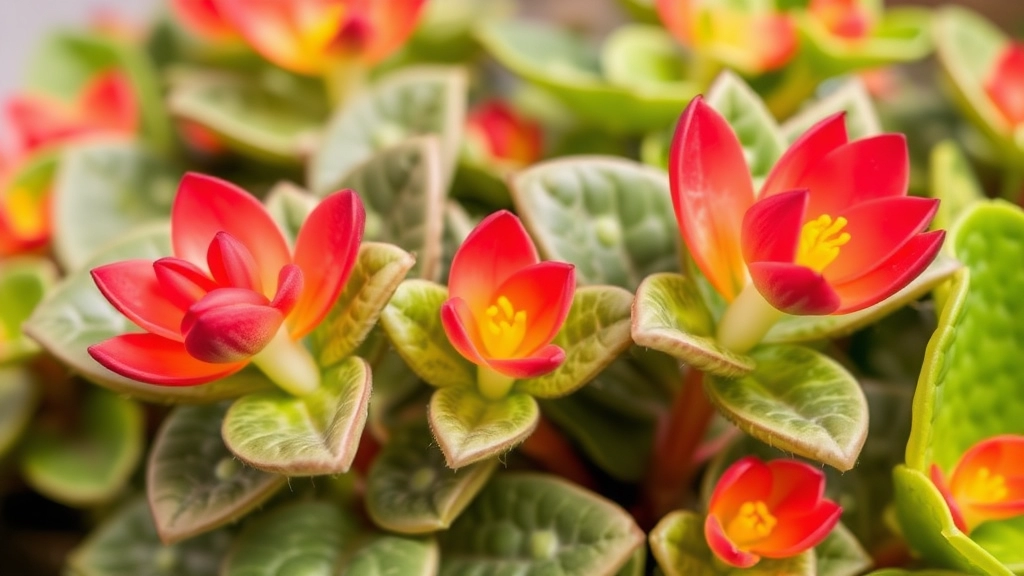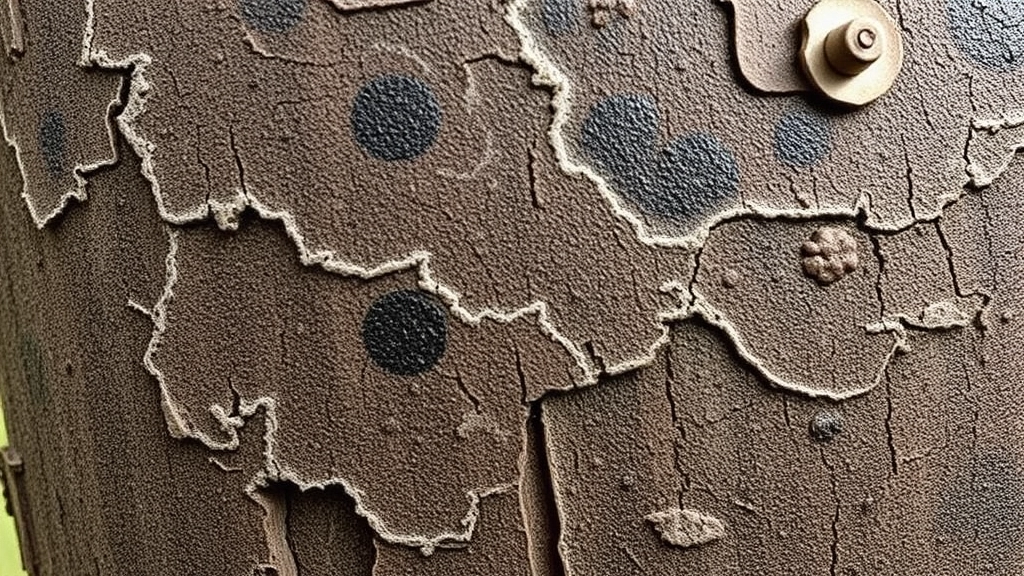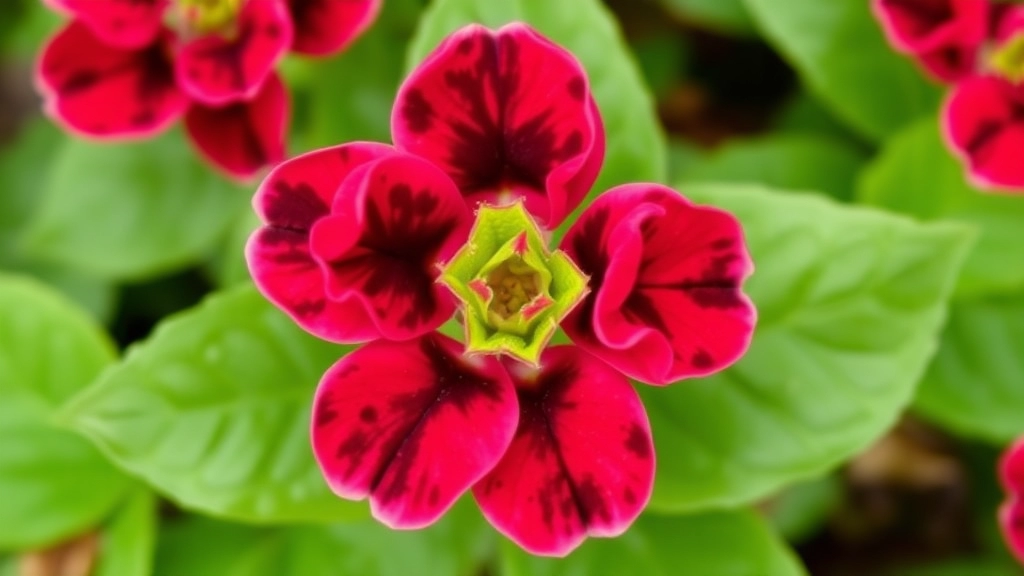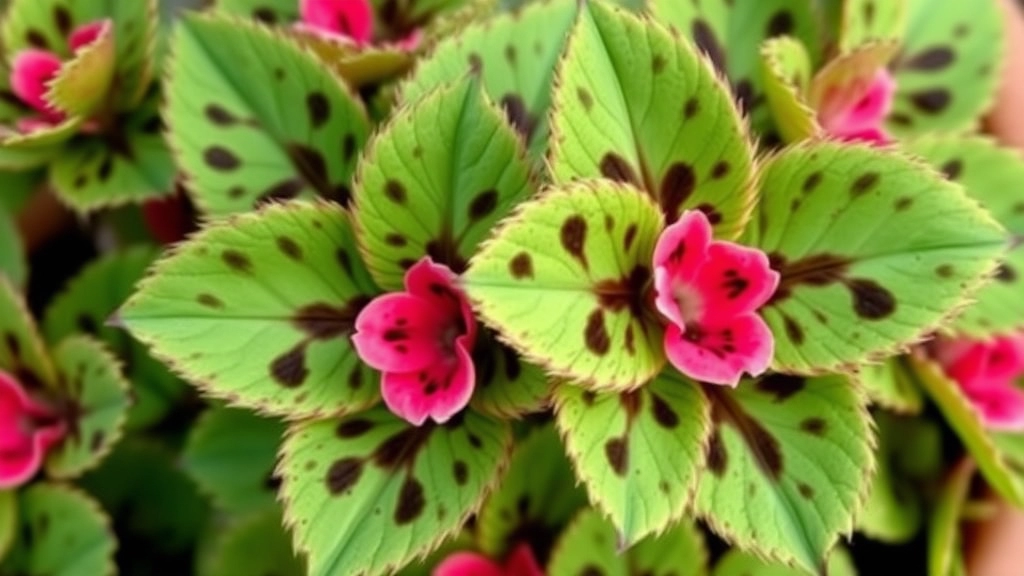Understanding Black Spots on Kalanchoe Leaves
Have you noticed black spots on your Kalanchoe leaves and are wondering what’s causing them? You’re not alone. These spots can be alarming, but understanding the common causes can help you address the issue effectively. From fungal infections to pest infestations, various factors can lead to black spots on your beloved plant.
Environmental factors like overwatering or poor ventilation can also contribute to the problem. The good news is, with the right preventive measures and treatments, you can restore your Kalanchoe to its healthy state. Read on to discover the causes and solutions for black spots on Kalanchoe leaves, and learn how to keep your plant thriving.
Have you ever noticed unsightly black spots on your Kalanchoe leaves? You’re not alone. Many plant enthusiasts face this frustrating issue. Understanding the common causes can help you restore your plant’s health.
### Fungal Infections
One of the leading culprits behind black spots is fungal infections. These pathogens thrive in warm, humid conditions.
– **Symptoms**: Look for dark, water-soaked spots that may expand over time.
– **Prevention**: Ensure good air circulation around your plant and avoid overhead watering.
### Pest Infestations
Pests can also contribute to the appearance of black spots.
– **Common Pests**: Aphids, mealybugs, and spider mites are notorious for infesting Kalanchoe.
– **Signs**: You might notice sticky residue or webbing along with the spots.
### Environmental Factors
Environmental stressors can lead to black spots as well.
– **Overwatering**: Excess moisture can cause root rot, leading to leaf discoloration.
– **Sunburn**: Too much direct sunlight can scorch the leaves, resulting in dark patches.
For more detailed information on how to manage and prevent these issues, you might find our [comprehensive guide to caring for Kalanchoe Brasiliensis](https://planthq.org/comprehensive-guide-caring-for-kalanchoe-brasiliensis/) helpful. Additionally, if you’re dealing with pests, our article on [how to care for Kalanchoe Tomentosa](https://planthq.org/kalanchoe-tomentosa-hairy-care-propagation-tips/) offers useful tips on pest control and plant care.
Fungal Infections and How They Affect Kalanchoe

So, you’ve noticed some pesky black spots on your Kalanchoe leaves. Could it be a fungal infection? Absolutely! Fungal infections are one of the common culprits behind those unsightly marks.
What to Look For:
- Dark Spots: These can start small and gradually spread, often appearing water-soaked.
- Leaf Wilting: Infected leaves may begin to droop or lose their firmness.
- Mouldy Growth: You might even see a fuzzy or powdery coating on the leaves.
Fungal issues often stem from overwatering or poor air circulation. When the leaves stay damp, it creates a perfect breeding ground for fungi.
How Fungi Affect Your Kalanchoe
Fungi can wreak havoc on your plant’s health. Here’s what happens:
- Nutrient Absorption: The infection can block the plant’s ability to take in nutrients, leading to stunted growth.
- Leaf Drop: A severe infection might cause leaves to drop prematurely, leaving your plant looking bare.
- Spread: If not tackled quickly, the infection can spread to other plants.
Prevention Tips
To keep your Kalanchoe safe from fungal infections, consider these tips:
- Water Wisely: Allow the soil to dry out between waterings.
- Improve Airflow: Space out your plants to ensure good air circulation.
- Clean Up: Regularly remove any dead leaves or debris from the pot.
By staying vigilant and following these steps, you can keep your Kalanchoe thriving.
Have you noticed black spots appearing on your Kalanchoe leaves? This can often be a sign of pest infestations, which are a common issue for plant enthusiasts.
Pests such as aphids, spider mites, and mealybugs can wreak havoc on your Kalanchoe, causing stress and damage that manifests as black spots. Here’s how these pests affect your plant:
– **Aphids**: These tiny insects suck the sap from your Kalanchoe, leading to wilting and black spots. They also excrete a sticky substance known as honeydew, which can encourage sooty mould growth.
– **Spider Mites**: These minute arachnids thrive in dry conditions. They damage the leaves by feeding on the plant’s juices, resulting in discolouration and black spots.
– **Mealybugs**: Recognisable by their cotton-like appearance, mealybugs can cluster on leaves and stems. Their feeding leads to stress and can create a breeding ground for sooty mould.
To tackle these pests effectively, consider the following steps:
– **Regular Inspection**: Check your Kalanchoe frequently for any signs of pests. Early detection is key to preventing further damage.
– **Natural Remedies**: Use neem oil or insecticidal soap to treat infestations. These solutions are effective and less harmful to beneficial insects.
– **Isolation**: If you discover pests, isolate the affected plant to prevent spreading to your other plants.
– **Cultural Practices**: Maintain good air circulation and avoid overwatering, as these conditions can attract pests.
Understanding the role pests play in the development of black spots on your Kalanchoe is crucial for effective management. For more detailed guidance, you might find this [complete care guide for Kalanchoe Beharensis](https://planthq.org/complete-care-guide-for-kalanchoe-beharensis-felt-plant/) helpful. Additionally, if you are dealing with a specific variety, such as the paddle plant, check out these [expert tips for healthy growth](https://planthq.org/kalanchoe-paddle-plant-care-expert-tips-for-healthy-growth/).
Environmental Factors Contributing to Black Spots

Have you noticed black spots appearing on your Kalanchoe leaves, and wondered if environmental conditions might be to blame?
Several environmental factors can significantly impact the health of your Kalanchoe, leading to those unsightly black spots.
Light Conditions
- Insufficient Light: Kalanchoe thrives in bright, indirect sunlight. If your plant is not receiving enough light, it may struggle, resulting in stress that manifests as black spots.
- Excessive Direct Sunlight: Conversely, too much direct sunlight can scorch the leaves, causing darkened areas to appear.
Humidity Levels
- High Humidity: While Kalanchoe prefers a dry environment, excessive humidity can foster fungal growth, leading to black spots.
- Low Humidity: On the flip side, very dry air can cause leaf stress, which may also contribute to the appearance of black spots.
Temperature Variations
- Extreme Temperatures: Kalanchoe is sensitive to temperature fluctuations. Exposure to cold drafts or extreme heat can weaken the plant, making it more susceptible to black spots.
- Sudden Changes: Rapid shifts in temperature can shock the plant, manifesting as dark spots on the leaves.
Watering Practices
- Overwatering: This is perhaps the most common environmental issue. Excess moisture can lead to root rot, resulting in black spots as the plant struggles to cope.
- Underwatering: Conversely, insufficient water can stress the plant, also causing black spots.
Preventive Measures for Healthy Kalanchoe Leaves
Are you worried about those pesky black spots appearing on your Kalanchoe leaves? You’re not alone. Many plant enthusiasts face this issue, but the good news is that prevention is key. By taking a few proactive steps, you can keep your Kalanchoe healthy and vibrant.
Effective Treatments for Black Spots on Kalanchoe

So, you’ve spotted those pesky black spots on your Kalanchoe leaves, and you’re probably wondering what you can do about it. Don’t worry; you’re not alone in this! Many plant lovers face this issue, and there are effective treatments to help your plant bounce back.
Identify the Cause First
Before diving into treatments, it’s crucial to pinpoint the cause of those spots.
- Fungal infections?
- Pest infestations?
- Environmental stress?
Knowing the root of the problem will guide your approach.
Treatment Options
Once you’ve identified the culprit, here are some treatments to consider:
For Fungal Infections:
- Remove Affected Leaves: Start by trimming away any leaves that are heavily affected. This helps prevent the spread.
- Fungicide Application: Use a suitable fungicide, ideally one that’s organic. Spray it according to the instructions on the label. Neem oil is a fantastic natural option here!
For Pest Infestations:
- Insecticidal Soap: A simple solution is to spray the leaves with insecticidal soap. It’s effective against many common pests like aphids and spider mites.
- Manual Removal: For larger pests, like mealybugs, you can remove them by hand. Just use a cotton swab dipped in alcohol.
For Environmental Issues:
- Adjust Watering: Overwatering or underwatering can stress your Kalanchoe. Make sure you’re letting the soil dry out between waterings.
- Improve Airflow: If your plant is crowded, consider relocating it to a spot with better airflow. This helps reduce humidity, which can lead to fungal growth.
Follow-Up Care
After treating your Kalanchoe, keep an eye on it.
- Monitor for New Spots: Check weekly for any signs of returning spots.
- Adjust Care Routine: If you notice recurring issues, it might be time to tweak your care routine.
Best Practices for Kalanchoe Care to Avoid Future Issues
As we explore the best practices for Kalanchoe care, it’s crucial to remember that prevention is always better than cure. By implementing some straightforward strategies, you can keep your Kalanchoe healthy and vibrant, steering clear of black spots and other issues.
Key Practices for Optimal Kalanchoe Health
- Proper Watering Techniques
- Ensure the pot has drainage holes.
- Water only when the top inch of soil is dry.
- Avoid letting the plant sit in standing water.
- Optimal Lighting Conditions
- Place your Kalanchoe in bright, indirect sunlight.
- Avoid harsh afternoon sun, which can scorch the leaves.
- Rotate the plant occasionally to promote even growth.
- Soil Selection
- Use a well-draining potting mix, ideally designed for succulents.
- Consider adding perlite or sand to improve drainage.
- Regular Inspection for Pests
- Check the undersides of leaves and stems regularly.
- Look for signs of pests like spider mites or aphids.
- If detected, treat promptly to prevent spread.
- Humidity and Temperature Control
- Keep your Kalanchoe in a room with low humidity.
- Maintain a temperature between 15°C to 25°C.
- Avoid placing it near drafts or heating vents.
- Fertilisation Routine
- Feed your Kalanchoe with a balanced fertiliser every 4-6 weeks during the growing season.
- Dilute the fertiliser to half strength to prevent root burn.
- Pruning and Maintenance
- Remove any dead or damaged leaves promptly.
- Prune to encourage bushier growth and improve air circulation.
By following these best practices, you can significantly reduce the chances of encountering black spots on your Kalanchoe leaves. For more detailed guidance, check out our Optimal Care for Kalanchoe Blossfeldiana Growth and Kalanchoe Blossfeldiana Poelln Care Guide.
FAQs About Black Spots on Kalanchoe Leaves
What causes black spots on Kalanchoe leaves?
Black spots on Kalanchoe leaves can be caused by a variety of factors including fungal infections, pest infestations, and environmental stress such as improper light, humidity, and temperature conditions.
How do I identify if the black spots are due to a fungal infection?
Fungal infections often present as dark, water-soaked spots that can spread over time. You might also notice leaf wilting and a mouldy or powdery growth on the leaves.
Can environmental factors contribute to black spots on Kalanchoe leaves?
Yes, environmental factors such as insufficient or excessive light, high or low humidity, and extreme temperature variations can contribute to the development of black spots on Kalanchoe leaves.
What are the best prevention tips to avoid black spots on Kalanchoe leaves?
To prevent black spots, water your Kalanchoe wisely, improve air circulation, and regularly clean up dead leaves or debris from the pot. Ensure your plant gets the right amount of light and is kept in a stable temperature environment.
How should I treat fungal infections on my Kalanchoe?
For fungal infections, remove the affected leaves and apply a suitable fungicide, preferably an organic one like neem oil. Ensure you follow the instructions on the fungicide label.
What should I do if pests are causing black spots on my Kalanchoe?
If pests are the issue, use insecticidal soap to spray the leaves or manually remove larger pests like mealybugs with a cotton swab dipped in alcohol.
How can I adjust my care routine to prevent black spots on Kalanchoe leaves?
Adjust your watering practices to ensure the soil dries out between waterings, improve airflow around the plant, and monitor environmental conditions such as light and humidity to keep your Kalanchoe healthy.
What should I do after treating my Kalanchoe for black spots?
After treatment, monitor your Kalanchoe weekly for any new spots and adjust your care routine as needed to prevent recurrence. Regularly check for signs of stress or infection to keep your plant thriving.
References
-
Understanding Fungal Infections in Kalanchoe
-
Environmental Factors Contributing to Black Spots on Kalanchoe
-
Effective Treatments for Black Spots on Kalanchoe
